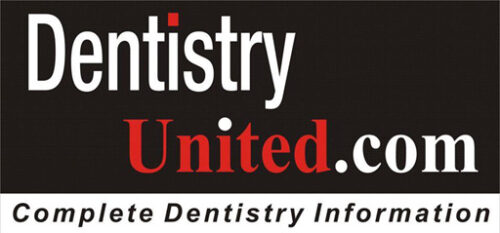Based on a clinical dialogue with Dr. Abdul Hamid Attar, BDS, MDS, Consultant Maxillofacial Surgeon, Mumbai, this piece has been conceptually distilled and thoughtfully rearticulated by Syed Nabeel, BDS, D Orth, MFD RCS (Ire), MFDS RCPS (Glasg), Founder, DentistryUnited—merging surgical insight with scholarly prose.
Prologue: Between Failure and Philosophy
In the pulsating operatory theatres of Mumbai, where precision is currency and haste is often temptation, Dr. Abdul Hamid Attar—an erudite maxillofacial surgeon of repute—stood witness to five back-to-back implant failures. Each was a case study in neglected fundamentals, a quiet protest against the glossy marketing of anodized surfaces and surgical shortcuts. He likened this clinical pattern to a “daily implant soap opera”—dramatic, repetitive, and tragically avoidable.
In an academic colloquy with Syed Nabeel of DentistryUnited, Dr. Attar distilled his observations into a singular truth: implant longevity is less about mechanical marvels and more about the bone’s biological benevolence. What follows is a biologically anchored, surgically disciplined rearticulation of his credo—intended not merely as commentary, but as a corrective compass for clinicians who seek not routine integration, but enduring success.
Chapter 1: Viable Bone – The Underrated Arbiter
At the crux of enduring osseointegration lies not titanium’s virtue, but the host bone’s vitality. Viable bone—defined histologically as well-vascularized, osteogenically potent, and metabolically dynamic—constitutes the cornerstone of functional integration.
1.1 The Bone Envelope
A critical 1.5–2.0 mm of circumferential bone is not a luxury—it is an anatomical necessity. This peri-implant envelope serves a dual mandate: conferring primary stability and acting as a buffer against peri-implantitis-linked resorption. Encroaching upon this zone, especially in esthetic sites, compromises not only structure but emergence profile and papillary architecture.
1.2 Vascular Considerations
Osteogenesis is fundamentally a vascular event. The perfusion status of the bone bed must inform both flap design and osteotomy protocol. The cavalier insertion of implants into sclerotic, avascular bone may deceive the eye with primary stability, but such integration lacks the cellular choreography required for load-responsive remodeling.
“You may osseointegrate today,” Dr. Attar warns, “but the biology will file its protest during functional loading.”
Chapter 2: Bone Trajectory – The Silent Biomechanical Symphony
While much discourse in implantology centers on restorative-driven planning, Dr. Attar redirects our gaze to the subtler axis: bone’s natural stress trajectories. The internal trabecular patterning of the maxilla and mandible is not random—it is nature’s architectural thesis on function under force.
2.1 Load-Conscious Placement
Implants must serve within the framework of axial loading. The introduction of shear vectors—particularly in cantilevered or buccally displaced implants—correlates with crestal bone loss and implant micromotion. The oral cavity does not forgive mechanical arrogance.
2.2 Respecting Bone Histomorphometry
Cone-beam computed tomography (CBCT) must not only confirm volume, but narrate quality. A clinician must be trained to read the density gradients, discern cortical thickness variations, and understand which bone segments are biomechanically cooperative. This transcends implant diameter and delves into cortical connectivity and trabecular anisotropy.
Dr. Attar’s aphorism: “Do not command the bone—converse with it.”
Chapter 3: Beyond Biomaterials – The Ethos of Implantology
We live in an age where implant systems proliferate faster than evidence. Coated, SLA-treated, laser-etched, zirconia-hybrid implants flood the market with promises of enhanced osseointegration. Yet, none of these claims supersede the primacy of host acceptance. An implant is not a solution—it is an invitation to a biological dialogue. If the recipient bed is biologically unresponsive or mechanically overburdened, even the most sophisticated system will falter.
Epilogue: The Osseointegration Covenant
The next frontier in implantology is not a new surface but a new sincerity. A return to fundamentals. A paradigm in which the surgeon is less a technician and more a biologist-engineer, synchronizing force vectors, vascular dynamics, and architectural fidelity.
Dr. Abdul Hamid Attar’s message is unmistakably clear: Honor the bone—its biology, its limits, its language. Because in every case of failure he reviewed, the implant had integrated—but the clinician had not.
Dr. Abdul Hameed Attar, BDS, MDS, is a distinguished maxillofacial surgeon based in Mumbai, currently serving at Wockhardt Hospital, Mira Road. With a career defined by surgical precision and digital innovation, Dr. Attar specializes in complex craniofacial reconstructions and is an accomplished CAD designer of patient-specific craniofacial implants. His expertise seamlessly bridges the analog and digital domains of surgical planning. As an accredited trainer in the domain of customized implantology, he has mentored numerous clinicians in adopting bespoke solutions for maxillofacial rehabilitation. Dr. Attar stands at the forefront of personalized surgical implant design, making him a sought-after voice in the evolving landscape of digital maxillofacial surgery.
Dr. Syed Nabeel, BDS, D.Orth, MFD RCS (Ireland), MFDS RCPS (Glasgow) is a clinician-scholar whose professional trajectory spans over a quarter century at the intersection of orthodontics, neuromuscular dentistry, and digitally driven diagnostics. As the Clinical Director of Smile Maker Clinics Pvt Ltd, he has articulated a refined philosophy of care that integrates anatomical exactitude with contemporary digital modalities, particularly in the nuanced management of temporomandibular disorders, esthetic smile reconstruction, and algorithm-guided orthodontic therapy. Grounded in the principles of occlusal neurophysiology, his approach is further distinguished by an enduring commitment to AI-enhanced clinical workflows and predictive modeling in complex craniofacial therapeutics. In 2004, Dr. Nabeel established DentistryUnited.com, a visionary digital platform designed to transcend clinical silos and foster transnational dialogue within the dental fraternity. This academic impetus culminated in the founding of Dental Follicle – The E-Journal of Dentistry (ISSN 2230-9489), a peer-reviewed initiative dedicated to the dissemination of original scholarship and interdisciplinary engagement. A lifelong learner, educator, and mentor, he remains deeply invested in cultivating critical thought among emerging clinicians, with particular emphasis on orthodontic biomechanics and the integrative neurofunctional paradigms that underpin both form and function.
